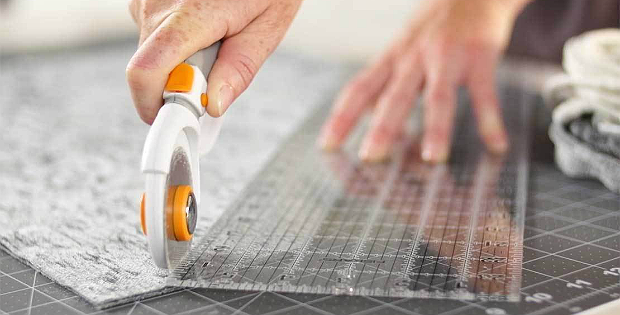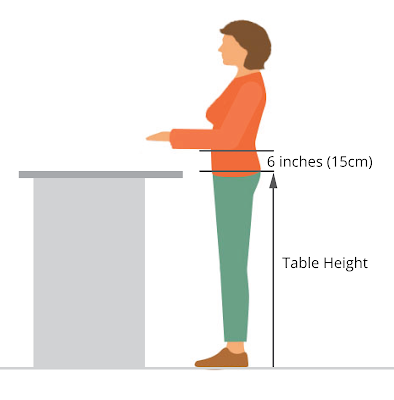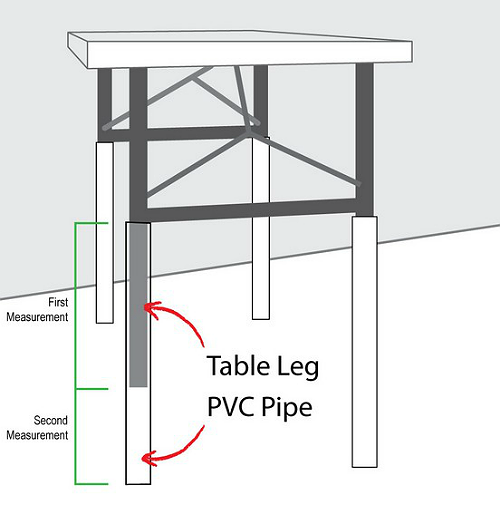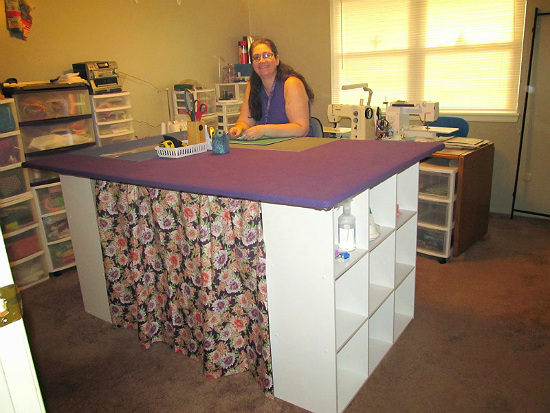How to Raise Your Cutting Table to Reduce Back Strain

Plus How to Make a Cutting and Pressing Table!
Does your back ache after a long stint of cutting? Chances are your cutting table is too low (or maybe even too high). The correct height will allow you to cut comfortably for long stretches of time, so it makes sense to determine the best height for you.
Many experts suggest that your table be about waist height, or such that you can stand straight with your arms bent at a right angle with forearms resting on the table.
 However, quilters often prefer the table a little shorter, hitting at the top of the hips (read through an excellent discussion about cutting table height here for things to consider). That height tends to work better for rotary cutting.
However, quilters often prefer the table a little shorter, hitting at the top of the hips (read through an excellent discussion about cutting table height here for things to consider). That height tends to work better for rotary cutting.
Kitchen countertop height works for a lot of quilters. You may want to try a bit of cutting on yours (with mat, of course!) to see how that height works for you.
Once you have determined a good height, you’ll probably need to raise your table. You definitely will if it’s a table you’d normally sit at.
Monica Curry provides three easy solutions for raising the height of a table. Another option may be to add lockable casters to add a bit more height to a table that’s almost tall enough.
Monica also discovered a great article at Ann’s Quilt N’ Stuff about making a table from scratch. The top has a layer of batting under the cover so it can be used for both pressing and cutting. You’ll find a lot of great ideas for planning your own DIY cutting table.
Image Source: The image at the top of the page is from Fiskars.













